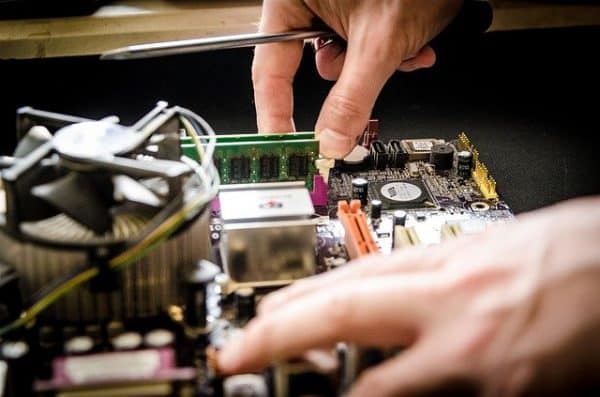
There are two types of electronic components: active and passive. The functional features and functioning of these components are entirely contradictory.
You can determine the active and passive components by the source’s type, power gain, operations, and current control: component examples, energy types, and external resistance requirements.
This post will learn about active and passive components and their differences. But first, let’s grasp what each component signifies and how it performs, so let’s begin.
Electronics: Active and Passive Components
While the differences between active and passive components are noticeable, they tap towards an essential aspect of electronics design: energy conservation.
Since energy cannot be generated or destroyed, and real-world devices cannot run at 100% performance, all passive operating circuits will lose specific power. The dip in energy between the input and output signals and a reduction in amplification demonstrate this net loss.
Want to know more about how active and passive components help your everyday lives? Check out https://www.tme.com/us/en-us/ and get enlightened.
Active Components
Active components can enhance and create power from an electric signal. Any typical active component will present a transistor, oscillator, or integrated circuit. In electronics, an active component serves as an alternating current circuit.
This aids the device’s ability to increase power and voltage. Since it is fueled by electricity, this component can carry out its functions. All active components require a source of energy, which is typically derived from a DC circuit.
Examples of Active Components
Transistors
Transistors are active circuit components that aren’t as evident as current or voltage sources. This is because transistors may increase the power of the signal.
Silicon Controlled Rectifiers (SCRs)
SCRs, or Silicon Controlled Rectifiers, is a power electronics switch. It contains three terminals and including Cathode, Anode, and Gate. The switch is open by nature, and no current can flow between the cathode and SCR’s anode terminals.
The switch is closed when a tiny current is provided to the gate pin, allowing a considerable amount of current to travel between the Anode and Cathode terminals.
Voltage Sources
Energy is delivered to the circuit when the current exits the positive terminal of the voltage source. A battery can be regarded as an active element according to the concept of an active element since it continually sends energy to the circuit while draining.
Current Sources
An optimal current source provides current to the circuit regardless of the circuit voltage. A current source is an active component since it controls the charge flow.
Passive Components
Capacitors, inductors, resistors, and transformers are all essential passive components. Except for the AC circuit, passive components do not need energy to function. Unlike the active component, they cannot increase the signal strength or amplify it.
Examples of Passive Components
Capacitors
Capacitors can load energy in the electric field across plates. Most people usually use it for storing in electrical circuits. You can also use them to distinguish between high and low-frequency signals in filter circuits.
Resistors
Because it cannot contribute any energy to a circuit, we can call a resistor a passive component. Instead, as long as current runs through it, resistors can only accept energy that they can release as heat.
Inductors
An inductor is a passive circuit component since it may store energy in a magnetic field and periodically transfer it to the circuit. An inductor’s capability for receiving and delivering energy is limited and transitory. As a result, an inductor is considered a passive component in a circuit.
Common Uses of Active and Passive Components
Small electronic components always surround us. They’re in lights, speakers, laptops, phones, automobiles, and more.
Active components are present in every electronic device. Hence, their applications are endless. These include gadgets having computational power (integrated circuits), batteries or displays, and LED lights (light-emitting diodes).
Incandescent light bulbs are a fantastic example of passive components that operate as transducers, converting electrical energy into light and heat. Sound waves are produced when the cones within loudspeakers vibrate, converting electrical input into mechanical output.
With the ‘smartification’ of several appliances and machinery, sensors are another transducer that has long been employed in scientific study.
Overall Thoughts
Active components use an external power source like vacuum tubes, amplifiers, and transistors to provide power to a device. They are essential for the connection to be called “electronic.” They leverage one electrical signal to regulate another.
Formally, we don’t call circuits lacking active components “electronics,” although, in reality, almost all electronic circuits contain passive components. Resistors, capacitors, and transistors are passive components that impact the power flow but do not need an external power supply to operate.
 Gearfuse Technology, Science, Culture & More
Gearfuse Technology, Science, Culture & More


